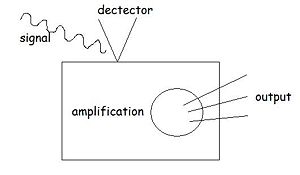Proteins involved in cancer
From Proteopedia
Cancer is a complex disease, that arises after an accumulation of alterations of normal cellular pathways. Cells can have altered responses to growth signals, deviations in cell cycle controls, or lose the capacity to undergo apoptosis when processes are not happening normally. Generally, there must be at least two defects for cancer to happen--one to inappropriately trigger cell division, and a second, loss of regulation. This is called the "two hit hypothesis".
Contents |
Signal transduction
Signal transduction is the process where cells detect their environment and respond to these cues. An analogy for many signal transduction pathways is a radio: the incoming signal is detected by a receptor, which triggers a cascade of amplification and translation steps. The result is an output, such as gene expression, cell expansion, DNA replication, and cell division.
Most growth cues funnel through receptor tyrosine kinase pathways. Some key participants that are often mutated in cancer include Epidermal Growth Factor Receptor, Ras, myc and PTEN.
Cell Cycle
The cell cycle is the steps that culminate in the division of a mother cell into two daughter cells. The "G" periods indicate times of cell "growth", while S indicates DNA replication and M indicates the actual splitting of the cell into two daughter cells. There is an "exit ramp" in G1 to a quiescent stage called G0.
It is important that the cell cycle include key checkpoints to ensure that the cell has enough resources to complete the division successfully. Mutations in these checkpoints are common in cancers. Key participants in this process include cyclin dependent kinases, MDM2, Retinoblastoma (Rb) protein and pINK family members.
Apoptosis
Apoptosis is the orderly disassembly of cells, and is also known as programmed cell death. This short video clip illustrates the major cellular stages of apoptosis: [fluorescence]
On a molecular level, apoptosis can be activated through a Jak/Stat pathway that proceeds through release of cytochrome C from the mitochondria via Bcl family member proteins, resulting in the activation of caspases, proteases which digest the cellular cytoskeleton, resulting in cellular blebbing. It can also be initiated by p53 through a Bax.


